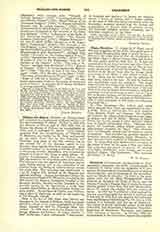

Cham, Chamites. I.—CHAM (A. V. Ham), son of Noe and progenitor of one of the three great races of men whose ethnographical table is given by Gen., X. Wherever the three sons of Noe are enumerated in the Bible, Cham is placed between Sem and Japhet. We may gather, however, from Gen., ix, 24 that this enumeration is not based on their age, since Cham is there spoken of as the “younger son” of Noe, as compared, apparently, with both his brothers. The only incident of the life of Cham after the deluge, which is recorded in the Bible, is that related in Gen., ix, 21-24. Cham sees his father under the influence of wine lying naked in his tent. He tells his brothers, who respectfully cover the patriarch. The sequel makes it plain that Cham was, on this occasion, guilty of great irreverence. For when Noe hears of the conduct of his sons he blesses Sem and Japhet, with their posterity, and he pronounces a curse, not on Cham, but on his son Chanaan and his descendants, predicting that they will be the servants of their brethren. (For a fuller treatment of this point see Chanaan (Chanaanites). Chanaan (Chanaanites).)
II.—THE CHAMITES.—The natives and tribes which descend from Cham are enumerated in Gen., x, 6-20. They are divided into four great families: Chus, Mesram, Phuth, and Chanaan. The Cushites are found in the valleys of the Euphrates and Tigris, in Arabia, and also in Africa. Mesram is Egypt. Phuth, less known, seems to have occupied regions west of Egypt, particularly Libya. Chanaan comprised the numerous tribes whose country was subsequently occupied by Israel. The Chamites were, consequently, spread over an immense extent of territory. They founded the greatest empires of antiquity, Assyria, Babylonia, Egypt, Phoenicia. In Asia they were early replaced or subjugated by Semites. In Africa they have likewise been overcome, in the course of time, by the races of Sem and Japhet. This subjection has meant, in general, the triumph of a higher civilization, purer morals, and a more spiritual religion. (See Lenormant, “Hist. ancienne l’Orient”, I, 96 sq.)
W. S. REILLY

